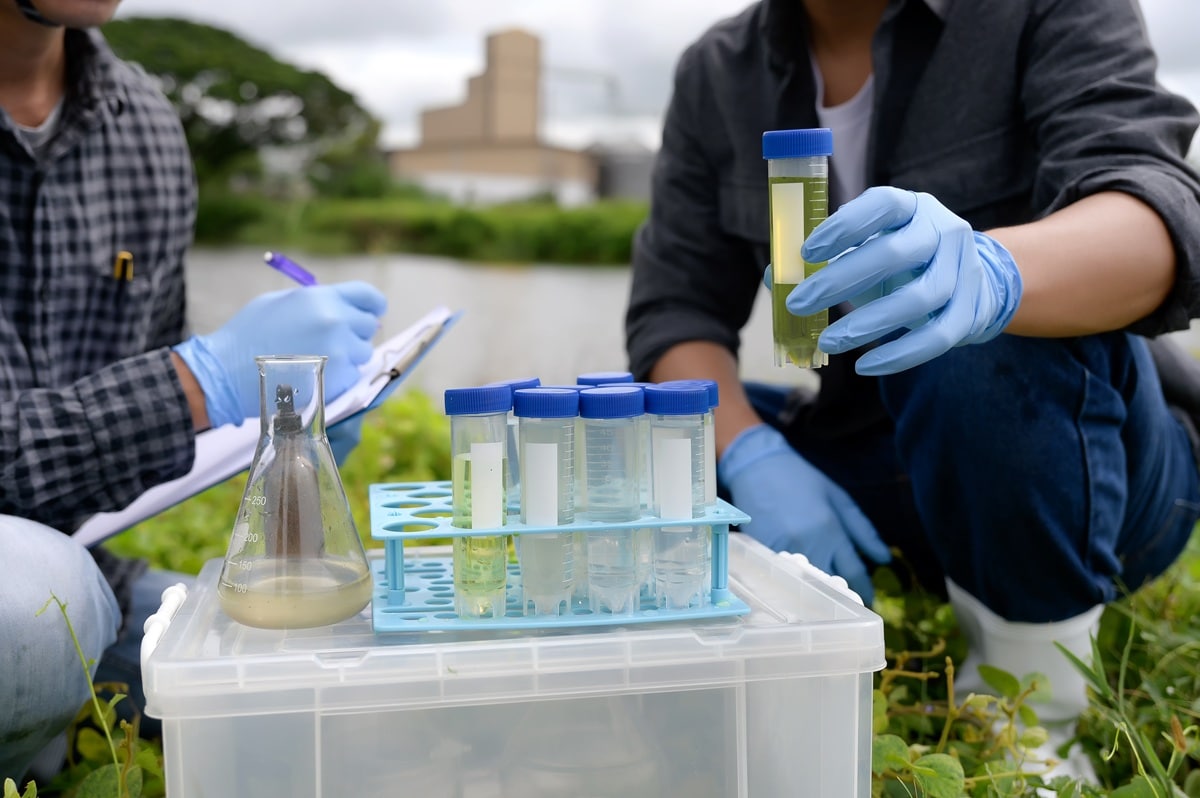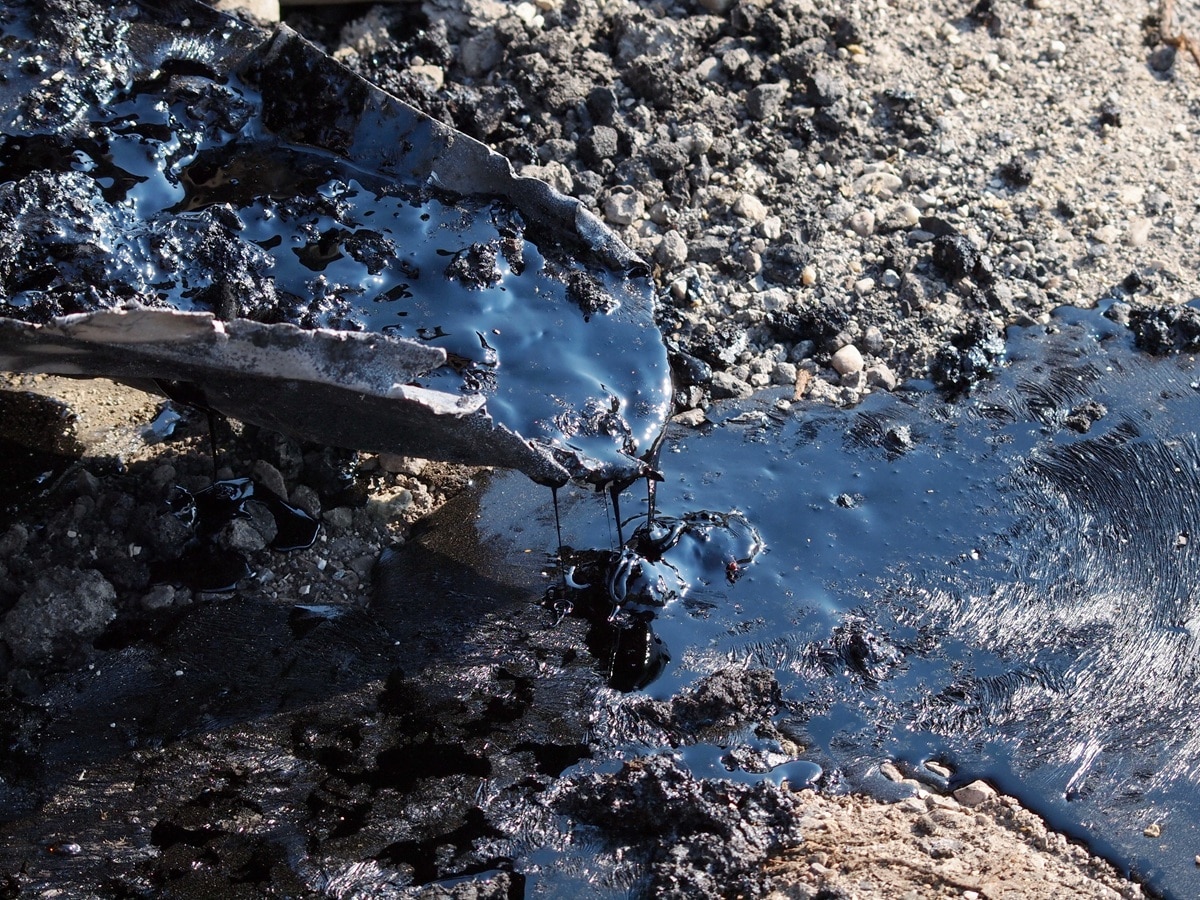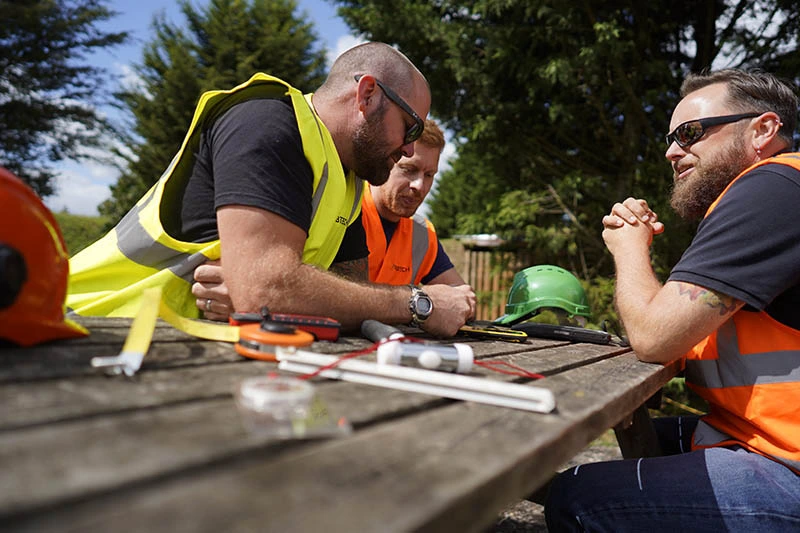Contaminated land report from £799
Contaminated land is a significant issue in the UK, affecting both the environment and public health. It arises from industrial activities, waste disposal, and accidental spills that introduce harmful substances into the soil and groundwater. Effective polluted land remediation is crucial for sustainable new development, property value retention, re use and compliance with environmental regulations.
The definition of contaminated land
Any area of land that contains substances which could cause significant harm to human health, ecosystems, or the wider environment can be described as contaminated. Common contaminants include heavy metals, hydrocarbons, asbestos, and chemicals such as pesticides and industrial solvents. The contaminants present could be the result of historical industrial activity, landfill sites, chemical spills, or agricultural practices, all of which could mean that land remediation is needed prior to any new use.

Why is a contaminated site problematic?
Contamination poses risks to human health or the environment. Land affected is often on previously developed brownfield sites that are likely to require remediation which can prove costly.
- Health risks: Exposure to hazardous substances such as lead, arsenic, or benzene can cause respiratory problems, neurological disorders, and even cancer.
- Environmental risks: Contaminants present in the soil can leach into groundwater, rivers, and lakes, leading to ecosystem degradation and harming wildlife.
- Economic consequences: Contamination can significantly reduce property values, limit development opportunities and increase construction costs. While a local authority might favour new development on contaminated urban areas, they must be satisfied that such sites do not pose an unacceptable risk.
- Legal and regulatory issues: Landowners and developers have legal obligations to remediate contaminated areas before construction or sale, according to UK regulations such as Part 2A of the Environmental Protection Act 1990.
- Clean up cost: This can be high, however, it may be possible to claim land remediation relief. Applying to Corporation Tax, land remediation relief provides a deduction of 100% plus an additional 50% deduction for costs incurred by companies.

What is contaminated land assessment and remediation?
The risk assessment process involves geo-thermal consultants investigating a brownfield land site to check for pollution in the soil and water. Based on their findings, consultants can then draw up a remediation scheme for removing pollution and making the site safe for future use. The contaminated land remediation process can take various approaches requiring the services of specialist contaminated land remediation contractors.
How is land contamination assessed?
A land contamination assessment follows a structured process to determine the extent of pollution and the necessary remediation strategies, some of which may require input from an engineering specialist. A geo-environmental consultant will work closely with the Environment Agency’s Land Contamination Risk Management guidelines to conduct a contaminated land risk assessment comprising:
- Preliminary Risk Assessment (desk study): This initial assessment reviews historical land use, geological surveys and potential sources of land contamination.
- Site investigation: Soil and water samples are collected and analysed to confirm contamination levels and distribution.
- Risk assessment: Experts assess the risk that contamination on the land affected poses to human health, water sources and ecology.
- Contaminated land remediation strategy development: Based on assessment results, appropriate land remediation activities are recommended.

Contaminated land remediation methods
There are several remediation techniques in existence for dealing with brownfield land, each with varying effectiveness levels and costs. The starting point is a land remediation report; on consideration of this, the chosen option may involve experts having to work closely together to achieve the desired result.
1. Excavation and disposal
- Process: Contaminated soil is physically removed from land affected by contamination and transported to a licensed landfill site.
- Effectiveness: Provides an immediate solution by eliminating contaminants.
- Cost: High, due to transportation and landfill charges (typically £50-£200 per tonne).
- Best for: Highly contaminated brownfield sites where rapid clearance is required.
2. Soil washing
- Process: Contaminants are separated from the soil using water, chemicals, or mechanical processes.
- Effectiveness: Reduces heavy metals and hydrocarbons but may not eliminate all contamination.
- Cost: Medium to high (£80-£150 per tonne).
- Best for: Contaminated areas with treatable soil properties.
3. Bioremediation
- Process: Micro-organisms are used to break down organic pollutants over time.
- Effectiveness: Environmentally friendly but slower than physical removal.
- Cost: Low to medium (£20-£70 per tonne).
- Best for: Sites contaminated with petroleum hydrocarbons and organic pollutants.
4. Chemical treatment
- Process: Chemicals such as oxidants or stabilisers neutralise contaminants.
- Effectiveness: Effective for organic contaminants but can alter soil properties.
- Cost: Medium (£50-£120 per tonne).
- Best for: Industrial sites with chemical contamination.
5. Containment (capping and barriers)
- Process: Contaminants are sealed using a barrier, such as clay or concrete, to prevent migration.
- Effectiveness: Prevents further spread but does not remove contamination.
- Cost: Medium to high (£50-£200 per square metre).
- Best for: Sites where excavation is not feasible.
6. In-situ stabilisation and solidification
- Process: Binding agents (e.g., cement, lime) are added to immobilise contaminants.
- Effectiveness: Reduces contaminant mobility but does not remove pollutants.
- Cost: Medium (£70-£140 per tonne).
- Best for: Heavy metal contamination.
7. Phytoremediation
- Process: Plants are used to absorb and neutralise contaminants over time.
- Effectiveness: Low-cost but slow and site dependent.
- Cost: Low (£10-£30 per square metre).
- Best for: Low to moderate contamination levels in large areas.

Choose the right contaminated land remediation process
The choice of remediation scheme depends on several factors, including the type and concentration of contaminants, the intended land use and regulatory requirements. Obtaining quotes from several land remediation contractors will provide you with contaminated land remediation costs to compare.
In many cases, a combination of methods may be used for optimal results when restoring brownfield land. By taking care not to undermine compliance, remediation activities can improve a site to an acceptable level and ensure that a new use can be secured for it.

Get support with a contaminated land remediation strategy
When considering contaminated land remediation, seeking expert advice from remediation specialists is highly recommended to ensure regulatory compliance and to implement the most cost-effective and sustainable solutions to deal adequately with the problem.
By employing the right contaminated land remediation strategy, affected land can be transformed into safe and productive spaces, contributing to a healthier and more sustainable future.
If you need to investigate a site thoroughly before making land remediation decisions, expert geo-environmental consultants from Arbtech can provide fast and efficient contaminated land risk assessments. Obtaining expert advice will clarify your options when considering remediation of contaminated land. For further information, fill in the quote form at the top of this page.


